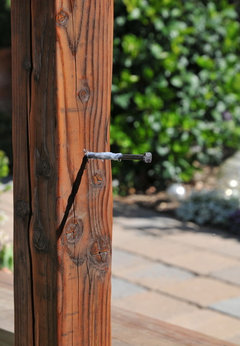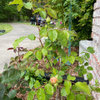Pillar rose question
ptwonline
10 years ago
Featured Answer
Sort by:Oldest
Comments (9)
Whitelacey
10 years agoSow_what? Southern California Inland
10 years agoRelated Professionals
Ashburn Landscape Architects & Landscape Designers · Forest Park Landscape Architects & Landscape Designers · Mitchellville Landscape Architects & Landscape Designers · Vernon Hills Landscape Architects & Landscape Designers · Washington Landscape Architects & Landscape Designers · Medford Landscape Contractors · Wake Forest Landscape Contractors · Tempe Landscape Contractors · Apollo Beach Landscape Contractors · Azalea Park Landscape Contractors · Del Aire Landscape Contractors · Essex Landscape Contractors · Harrisburg Landscape Contractors · Palm Beach Gardens Landscape Contractors · Wells Landscape Contractorsptwonline
10 years agotoolbelt68
10 years agomad_gallica (z5 Eastern NY)
10 years agodublinbay z6 (KS)
10 years agoSow_what? Southern California Inland
10 years agomikeber
10 years ago
Related Stories

ORGANIZINGPre-Storage Checklist: 10 Questions to Ask Yourself Before You Store
Wait, stop. Do you really need to keep that item you’re about to put into storage?
Full Story
GREEN BUILDINGConsidering Concrete Floors? 3 Green-Minded Questions to Ask
Learn what’s in your concrete and about sustainability to make a healthy choice for your home and the earth
Full Story
GARDENING GUIDES6 Captivating Roses for an Alluringly Fragrant Garden
Perfume your garden with aromas from richly spicy to lightly sweet, without sacrificing an inch of color
Full Story
GARDENING GUIDESWhat Kind of Roses Should You Grow?
Want to add the beauty of roses to your garden? Find out which ones, from old-fashioned to modern, are right for you
Full Story
PLANTING IDEASGreat Garden Combo: Rose + Clematis for Small-Space Impact
We all need somebody to lean on. And when a rose supports a climbing vine, the results can totally transform a small garden
Full Story
GARDENING GUIDESLearn the Secret to Bigger and Better Roses
Grow beautiful roses using both ordinary and unusual soil amendments
Full Story
WINTER GARDENINGPruning Secrets for Exquisite Roses
Encourage gorgeous blooms year after year with this time-tested advice on how to prune your rosebush in winter for health and shape
Full Story
GARDENING GUIDESGreat Design Plant: Rosa Banksiae a Low-Maintenance Beauty
This thornless, disease- and insect-resistant rose brings showers of white or yellow flowers to the spring garden
Full Story
DIY PROJECTSHoliday DIY: Mason Jar Forced Bulbs and Evergreen Gift Tags
Learn how to make these winter projects from the book ‘Garden Made’ by Stephanie Rose
Full Story











dublinbay z6 (KS)